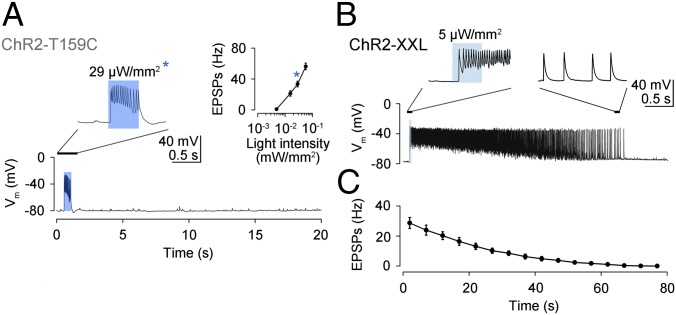Fig. 3.
Electrophysiological characterization of light-evoked neuromuscular transmission. (A) ChR2-T159C elicited EPSPs that terminated with the end of the light pulse. The frequency of EPSPs depended on light intensity (Inset, asterisk indicates 29 µW/mm2). (B) With ChR2-XXL, a brief, low-intensity light pulse triggered EPSPs, which persisted after the end of the stimulus and (C) decayed exponentially (mean ± SEM). Both genotypes were fed retinal.

